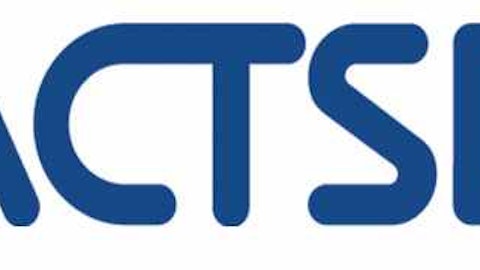Putting it all together, management believes TRI can compound earnings at a double-digit rate from 2013 to 2017, resulting in total earnings growth in excess of 50%. The bulk of the increase is being driven by cost efficiency gains and incremental revenue growth (recall that TRI’s cost base is largely fixed).

Source: Thomson Reuters Investor Presentation
Key Risks
As we hinted at above, TRI’s M&A strategy has been a double-edged sword. On one hand, it has helped the company develop an extremely valuable asset base that is difficult to replicate.
On the other hand, it has clearly created an overly complex and fragmented product and cultural infrastructure. TRI is showing good progress on its 2017 plan, but it’s still far from being a risk-free endeavor.
Beyond company-specific execution risk, TRI’s markets are increasingly tech-driven. The reality is that data is becoming cheaper, information is more accessible than ever before, and low technology costs (e.g. the cloud) have resulted in thousands of fin-tech startups trying to disrupt the old incumbents like TRI, Bloomberg, and LexisNexis. These trends, which encourage more competition and innovation, will only intensify in the coming years.
Furthermore, some of TRI’s larger markets (e.g. banks, big law firms) are struggling to grow headcounts due to heightened regulatory scrutiny and challenging economic conditions. Market saturation could lead to intensified competition and pricing pressures.
In other words, it’s more important than ever before for TRI to stay reasonably ahead of customers’ evolving needs to maintain its strong market share and profitability. We think the company still has a large advantage as the incumbent, but smaller players will always be much faster-moving.
If competitors begin eroding TRI’s moat, it seems reasonable to expect a company as big as TRI to struggle with generating profitable organic sales growth. As of today, the business appears to be performing well.
TRI’s Financial business has recorded six consecutive quarters of positive net sales (as of the third quarter of 2015). The Legal business also saw revenues grow by 1% and would have been up by 3% excluding print revenues. It’s also worth mentioning that TRI’s Financial & Risk segment posted its first year of sales growth since 2008 in 2014. Macro conditions have been strengthening, but TRI’s initiatives have been driving some of the improvement.
For 2015, management expects positive organic revenue growth from all of its existing businesses and increased free cash flow generation compared to 2014. For now, it seems like TRI is keeping its competitors at a safe distance.
Dividend Analysis
We analyze 25+ years of dividend data and 10+ years of fundamental data to understand the safety and growth prospects of a dividend. TRI’s long-term dividend and fundamental data charts can all be seen by clicking here.
Dividend Safety Score
Our Safety Score answers the question, “Is the current dividend payment safe?” We look at factors such as current and historical EPS and FCF payout ratios, debt levels, free cash flow generation, industry cyclicality, ROIC trends, and more. Scores of 50 are average, 75 or higher is very good, and 25 or lower is considered weak.
TRI’s dividend Safety Score of 54 suggests that its dividend’s safety is about average. The company’s payout ratios are a little higher than we prefer and it maintains a lot of debt on the balance sheet. However, its cash flows are very stable, and management is still squeezing out some earnings growth. It’s also hard to ignore the company’s commitment to the dividend with 22 consecutive years of growth.





